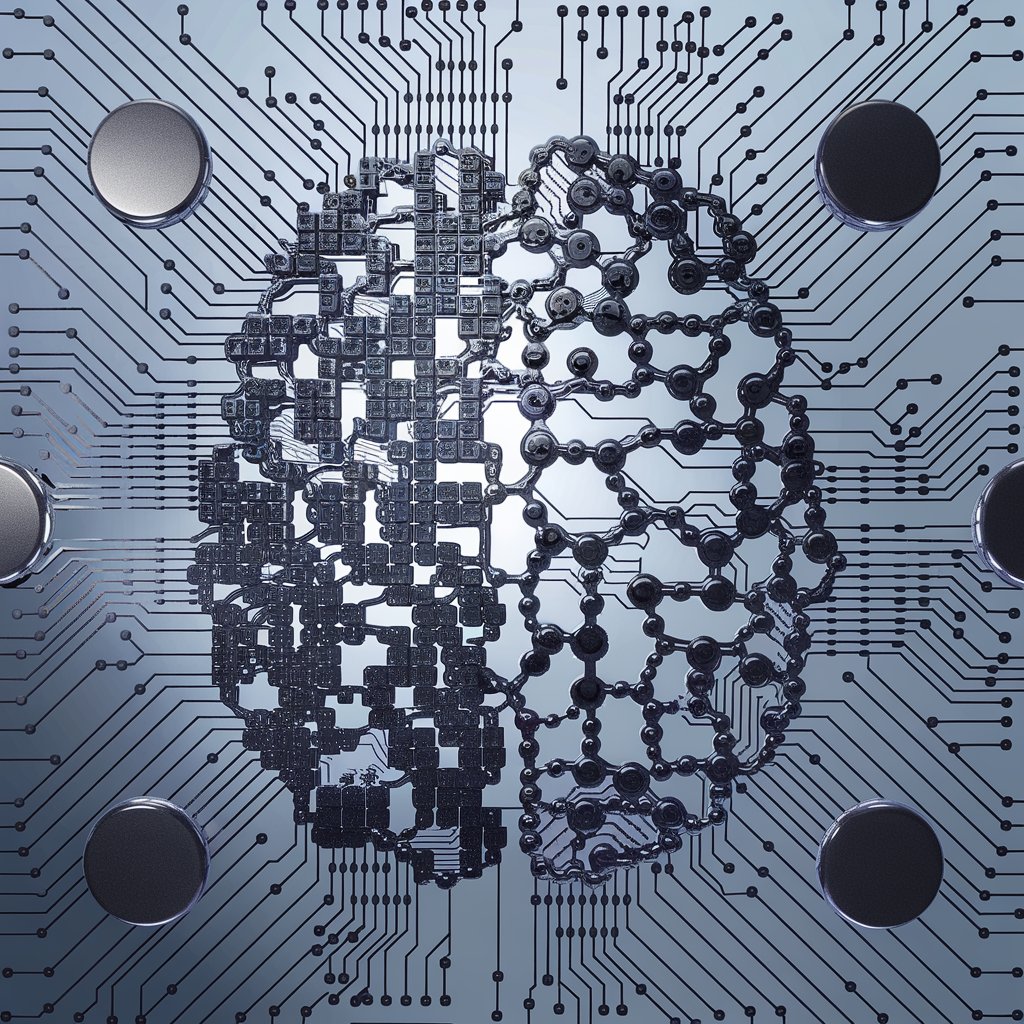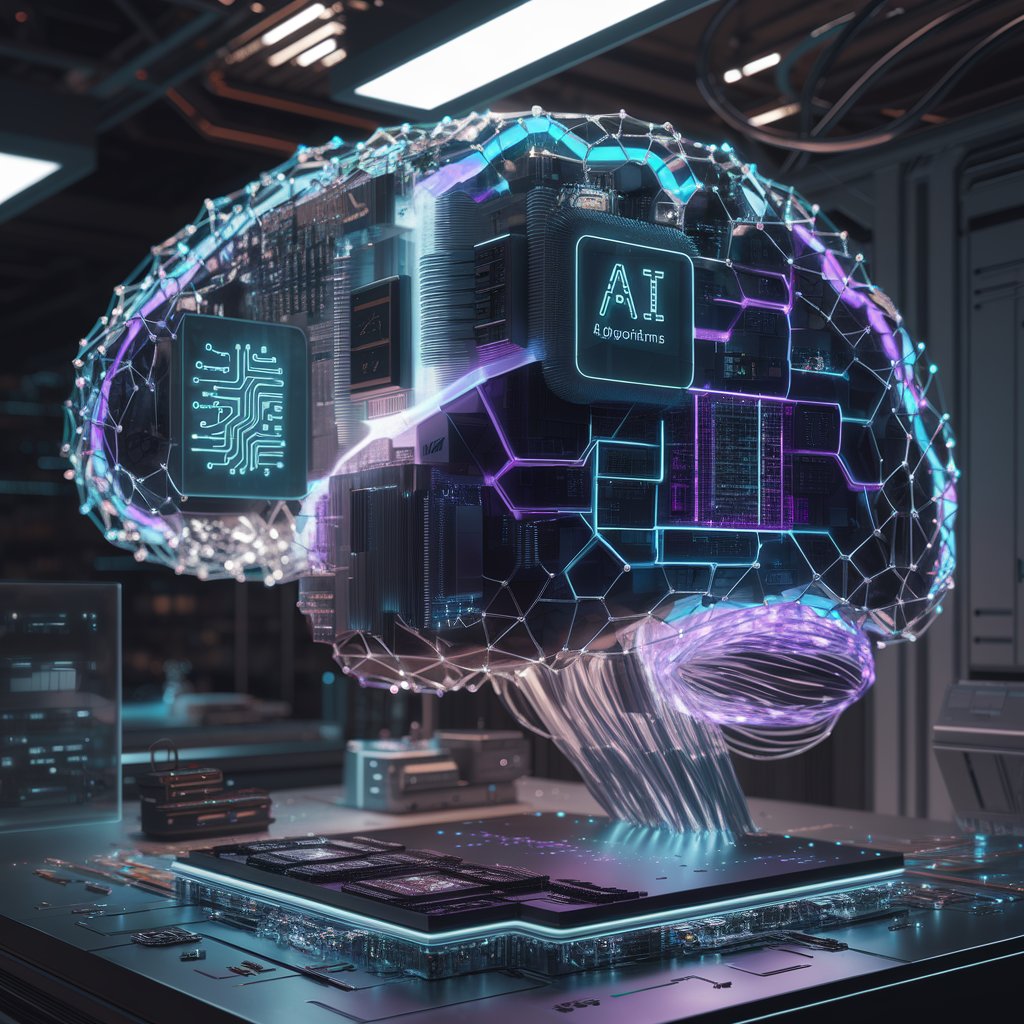In recent years, the rapid advancement of artificial intelligence (AI) and machine learning (ML) has captured the global spotlight, reshaping industries, societies, and technologies. As AI continues to evolve, the demand for computing systems that can handle the complexity and scale of neural networks is growing exponentially. Enter neuromorphic chips, a revolutionary class of hardware designed to mimic the brain’s neural architecture. These chips are poised to be the backbone of the next generation of AI systems, offering unprecedented levels of efficiency, adaptability, and performance.
Neuromorphic chips are changing the landscape of AI computing by offering a novel approach to processing information that emulates the behavior of biological neurons and synapses. Unlike traditional processors, which are designed to process tasks sequentially, neuromorphic chips can handle parallel processing in a way that closely resembles the brain’s ability to process vast amounts of data simultaneously.
The future of the neuromorphic chips industry, exploring how they are revolutionizing AI and computing and what lies ahead for this exciting and innovative field.
What Are Neuromorphic Chips?
At the core of neuromorphic computing is the idea of replicating the brain’s architecture and cognitive functions using specialized hardware. Traditional computers, based on the von Neumann architecture, process data in a sequential manner, where tasks are handled one after another. In contrast, neuromorphic chips are designed to emulate the brain’s parallel processing, which allows them to handle multiple tasks simultaneously and process data more efficiently.
Neuromorphic chips are built to mimic the structure and function of neurons and synapses in the human brain. These chips use spiking neural networks (SNNs), a computational model that represents neurons firing in discrete events, similar to how biological neurons transmit electrical signals. The key feature of neuromorphic chips is their ability to learn and adapt in real-time, enabling them to process sensory input, recognize patterns, and make decisions autonomously.
The neuromorphic hardware typically includes a network of artificial neurons and synapses that work together to process complex data streams, enabling systems to learn from experience without needing a predefined set of rules. This capability brings AI systems closer to the human brain’s ability to perceive, understand, and interact with the world.
The neuromorphic computing industry is expected to grow from USD 28.5 million in 2024 and is estimated to reach USD 1,325.2 million by 2030; it is expected to grow at a Compound Annual Growth Rate (CAGR) of 89.7% from 2024 to 2030.
Key Advantages of Neuromorphic Chips
The growing interest in neuromorphic computing is driven by the unique advantages these chips offer over traditional computing hardware. Some of the most significant benefits of neuromorphic chips include:
1. Energy Efficiency
One of the biggest challenges in traditional AI systems is the vast amount of energy required to train deep learning models. These models typically require massive computational resources, leading to high energy consumption and carbon footprints. Neuromorphic chips, however, are highly energy-efficient because they mimic the brain’s low-power operation.
By using spiking neural networks and analog circuits, neuromorphic chips process information more efficiently, consuming less power compared to traditional digital circuits. This energy efficiency makes them ideal for edge computing applications, where energy constraints are crucial, such as autonomous vehicles, wearable devices, and Internet of Things (IoT) devices.
2. Real-Time Processing
Unlike traditional processors, which require data to be processed sequentially, neuromorphic chips can handle parallel processing in real-time. This allows them to process complex tasks like sensory perception, decision-making, and pattern recognition instantly. As a result, neuromorphic chips are particularly well-suited for applications that require real-time data processing, such as robotics, autonomous vehicles, and smart cities.
In applications like autonomous driving, where split-second decisions must be made based on a constant stream of sensor data, the ability of neuromorphic chips to process data in real-time offers a major advantage.
3. Adaptability and Learning
Neuromorphic chips have the ability to learn and adapt to new inputs, much like the human brain. Traditional AI models require extensive training on large datasets before they can perform specific tasks. In contrast, neuromorphic chips can continuously update their behavior based on new experiences, making them ideal for unsupervised learning and lifelong learning.
This adaptability opens up new possibilities in areas such as robotics, where machines need to learn from their environment and improve their actions over time, and personalized healthcare, where devices can adapt to a patient’s specific needs.
Download PDF Brochure @ https://www.marketsandmarkets.com/pdfdownloadNew.asp?id=227703024

4. Scalability
Neuromorphic chips are highly scalable, meaning they can be expanded to handle increasingly complex tasks without requiring massive increases in energy consumption. As AI systems grow and evolve, the need for scalable computing architectures becomes more apparent. Neuromorphic chips provide the ability to create scalable, high-performance systems that can handle everything from small-scale tasks to large, complex operations.
Scalability is particularly important in cloud computing and data centers, where AI and machine learning applications require vast computational resources. Neuromorphic chips can scale more efficiently, offering a significant advantage in handling the increasing demands of modern computing.
Applications of Neuromorphic Chips
The potential applications for neuromorphic chips are vast, and many industries are already exploring their use in various fields. Some key areas where neuromorphic chips are poised to make a significant impact include:
1. Autonomous Vehicles
The integration of neuromorphic chips in autonomous vehicles can help improve real-time decision-making and environmental perception. Autonomous driving relies on processing large amounts of sensor data from cameras, LIDAR, radar, and other sensors. Neuromorphic chips can help speed up the processing of this data, enabling faster, more accurate decision-making and allowing vehicles to navigate complex environments safely.
Moreover, their energy-efficient design makes neuromorphic chips ideal for processing data on edge devices like vehicles without relying heavily on cloud processing, which can reduce latency and improve overall system performance.
2. Robotics
Neuromorphic chips hold significant promise in robotics, where real-time sensory data processing, pattern recognition, and decision-making are critical. These chips can enable robots to interact with their environment in a more human-like way by enabling continuous learning and adaptation. In industrial automation, healthcare robots, and service robots, neuromorphic chips will allow machines to respond intelligently to changing conditions and execute tasks more efficiently.
3. Artificial Intelligence and Machine Learning
The power of neuromorphic chips lies in their ability to perform cognitive tasks similar to the human brain. By providing a more efficient and scalable architecture, neuromorphic chips could lead to advancements in machine learning and artificial intelligence. AI systems that rely on neuromorphic computing can learn and adapt continuously, making them more effective for tasks that require real-time decision-making and unsupervised learning.
Neuromorphic chips can accelerate the performance of AI systems, especially for applications that require complex pattern recognition, such as natural language processing, facial recognition, and recommendation systems.
4. Healthcare and Personalized Medicine
Neuromorphic computing could also transform healthcare by enabling personalized medical devices that adapt to an individual’s needs. For example, wearable health monitors powered by neuromorphic chips could continuously learn and adjust to a patient’s condition, providing real-time health insights and alerts. In the future, neuromorphic chips could power smart prosthetics, neuroprosthetics, and other assistive technologies that improve quality of life for patients with neurological disorders.
5. Smart Devices and IoT
Neuromorphic chips are a perfect fit for the growing Internet of Things (IoT) ecosystem. With the ability to process information locally on edge devices, neuromorphic chips can enable smart devices to become more autonomous and intelligent. From smart home assistants to industrial sensors, these chips can help devices learn from their environment, respond to changing conditions, and improve user experiences.

Challenges and the Road Ahead
Despite their many advantages, neuromorphic chips still face challenges that need to be addressed before they can achieve widespread adoption. One of the major hurdles is hardware development. Creating neuromorphic chips that are scalable, reliable, and efficient requires significant investment in research and development. Furthermore, software ecosystems need to evolve to support neuromorphic architectures, as traditional AI frameworks are not yet fully optimized for neuromorphic computing.
Another challenge is integration with existing systems. While neuromorphic chips show promise, they will need to be integrated with traditional computing systems and infrastructures, which can be a complex process.
However, as neuromorphic chip technology continues to advance and more companies invest in research, these challenges are likely to diminish. With increasing demand for more powerful, efficient, and intelligent AI systems, the future of neuromorphic chips is bright.
Neuromorphic chips are poised to revolutionize the field of AI and computing by offering an innovative and efficient approach to processing information. By emulating the brain’s neural architecture, these chips enable real-time learning, energy efficiency, and adaptability, making them ideal for a wide range of applications, from autonomous vehicles to smart devices.
As the industry moves toward more brain-inspired computing and the demand for scalable AI systems grows, neuromorphic chips will play an essential role in shaping the future of technology. With continued innovation and investment, the neuromorphic chips industry has the potential to redefine how we think about AI, computing, and intelligent systems.
About MarketsandMarkets™
MarketsandMarkets™ is a blue ocean alternative in growth consulting and program management, leveraging a man-machine offering to drive supernormal growth for progressive organizations in the B2B space. We have the widest lens on emerging technologies, making us proficient in co-creating supernormal growth for clients.
The B2B economy is witnessing the emergence of $25 trillion of new revenue streams that are substituting existing revenue streams in this decade alone. We work with clients on growth programs, helping them monetize this $25 trillion opportunity through our service lines – TAM Expansion, Go-to-Market (GTM) Strategy to Execution, Market Share Gain, Account Enablement, and Thought Leadership Marketing.
Built on the ’GIVE Growth’ principle, we work with several Forbes Global 2000 B2B companies – helping them stay relevant in a disruptive ecosystem. Our insights and strategies are molded by our industry experts, cutting-edge AI-powered Market Intelligence Cloud, and years of research. The KnowledgeStore™ (our Market Intelligence Cloud) integrates our research, facilitates an analysis of interconnections through a set of applications, helping clients look at the entire ecosystem and understand the revenue shifts happening in their industry.
To find out more, visit www.MarketsandMarkets™.com or follow us on Twitter, LinkedIn and Facebook.
Contact:
Mr. Rohan Salgarkar
MarketsandMarkets™ INC.
1615 South Congress Ave.
Suite 103
Delray Beach, FL 33445
USA : 1-888-600-6441